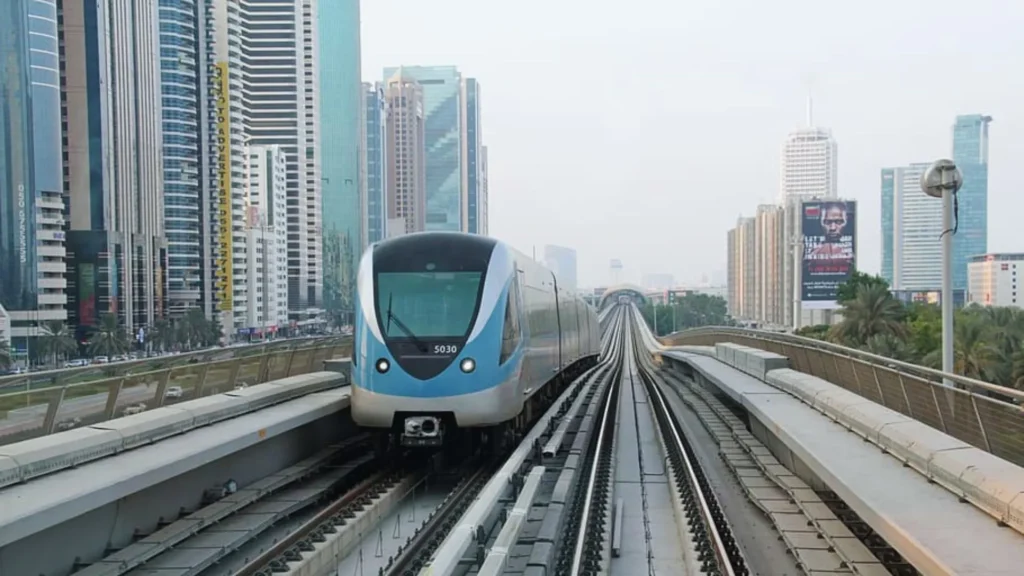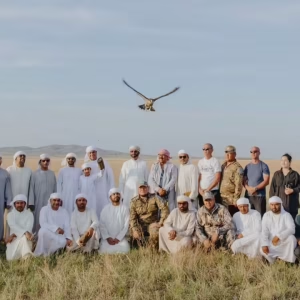Dubai is known for its tall skyscrapers, luxury lifestyle, and endless attractions. But one of the most important parts of the city is not always visible—it runs underground and high above the streets. It’s the Dubai Metro. Since its launch in 2009, the Dubai Metro has changed the way people move around the city. It’s fast, clean, safe, and one of the most advanced metro systems in the world.
How It All Began
Dubai Metro was officially launched on 9 September 2009. It was a big moment not just for the UAE, but for the entire region. At the time, it was the first urban train network in the Arabian Peninsula. The project was handled by Dubai’s Roads and Transport Authority (RTA) with the help of international engineering companies.
The first line to open was the Red Line, which runs along Sheikh Zayed Road. The Green Line followed two years later in 2011, covering areas like Deira and Bur Dubai. Today, the metro has over 50 stations and covers more than 75 kilometers of track.

A Smarter Way to Travel
One of the reasons why people love the Dubai Metro is its ease of use. It’s completely driverless and fully automated. Trains arrive on time, and the stations are equipped with clear signs and helpful staff. The entire system is monitored with advanced technology to make sure everything runs smoothly.
The metro is also known for being very clean and safe. You won’t find litter or graffiti, and there are clear rules to make sure everyone behaves properly. Eating, drinking, and chewing gum are not allowed on trains or platforms.

What’s more, the trains are fully air-conditioned—something very important in Dubai’s hot weather. There are also special cabins for women and children, and another cabin for Gold Class passengers who want extra comfort.
Who Uses the Metro?
Every day, hundreds of thousands of people use the Dubai Metro. It’s popular with tourists, office workers, students, and even families. The metro connects to major areas like Downtown Dubai, Business Bay, the Dubai Mall, the World Trade Centre, and Dubai International Airport.
According to the RTA, over 200 million riders used the Dubai Metro in 2023 alone. That shows how important it is for everyday life in the city. The metro has also helped reduce traffic jams and cut down on pollution by encouraging people to use public transport instead of driving.
Fares and Nol Cards
Using the Dubai Metro is easy and affordable. You need a Nol Card to ride. These cards can be bought and recharged at any station. There are different types of Nol Cards for regular passengers, students, senior citizens, and people with disabilities. The fare depends on how far you travel and which zone you pass through.
Fares start as low as AED 3 for a short trip. Even the longest journeys on the metro rarely cost more than AED 8. That’s a great deal compared to the cost of driving, parking, or taking a taxi.
Expo 2020 and the New Route

In 2021, the Dubai Metro made another big move—it launched a new extension called Route 2020. This line connects the main metro network to the Expo 2020 site, located in Dubai South. The route includes several new stations such as The Gardens, Discovery Gardens, Al Furjan, and Jebel Ali.
Even though Expo 2020 is over, the new route continues to serve areas that are growing fast. Dubai South is expected to become a major hub for business, housing, and even aviation, with Al Maktoum International Airport being developed there.
Future Plans for the Metro
Dubai is a city that never stops dreaming, and the same goes for its metro system. The government has plans to expand the network even further. One of the key goals is to connect more residential areas to the metro, making it easier for people to commute to work or school.
There are also plans to introduce new technology like AI (Artificial Intelligence) and 5G connectivity to improve the travel experience. The RTA is also exploring ways to make stations more energy-efficient and environmentally friendly.
Some reports have hinted at possible extensions toward Sharjah in the future, which could create a direct metro link between Dubai and its neighboring emirate. That would be a game-changer for the daily commuters who travel between the two cities.
Challenges and Solutions
Of course, no public system is perfect. During rush hours, some metro stations get extremely crowded, especially at locations like Union and BurJuman. To handle this, the RTA regularly increases train frequency during peak times. They also keep adding more buses, trams, and taxis to connect areas not yet served by the metro.
Another challenge is keeping up with the fast growth of the city. As more buildings, communities, and malls pop up, the demand for metro access grows too. That’s why long-term planning is so important.
A Role Model for the Region
Dubai Metro has become a model for other cities in the Middle East and beyond. Cities like Riyadh, Doha, and Cairo have taken notes from Dubai’s success. What makes Dubai Metro special is not just its design, but also the strong management and constant upgrades.
The metro also supports the UAE’s larger goals. It plays a part in Dubai’s “smart city” vision and the UAE’s commitment to reducing carbon emissions. It’s not just about moving people from one place to another—it’s about creating a better, greener future.
What People Say
Many residents of Dubai consider the metro a part of their daily lives. One commuter, Sara, a university student living in Al Qusais, said, “Without the metro, I’d have to spend over an hour in traffic. With it, I’m always on time.”
Tourists also appreciate the metro for its convenience. A visitor from Germany mentioned, “I was amazed that I could get from the airport to my hotel in Downtown Dubai without needing a taxi. It was clean, fast, and easy to use.”
Final Thoughts
The Dubai Metro is more than just a train system—it’s a symbol of the city’s progress and planning. In just over a decade, it has become one of the most important parts of Dubai’s transport system. As the city grows, so will the metro. And with new stations, routes, and ideas on the way, the future looks bright for this high-tech transport network.
Also read: Discover Mamzar Beach in Dubai – A Hidden Gem by the Sea













